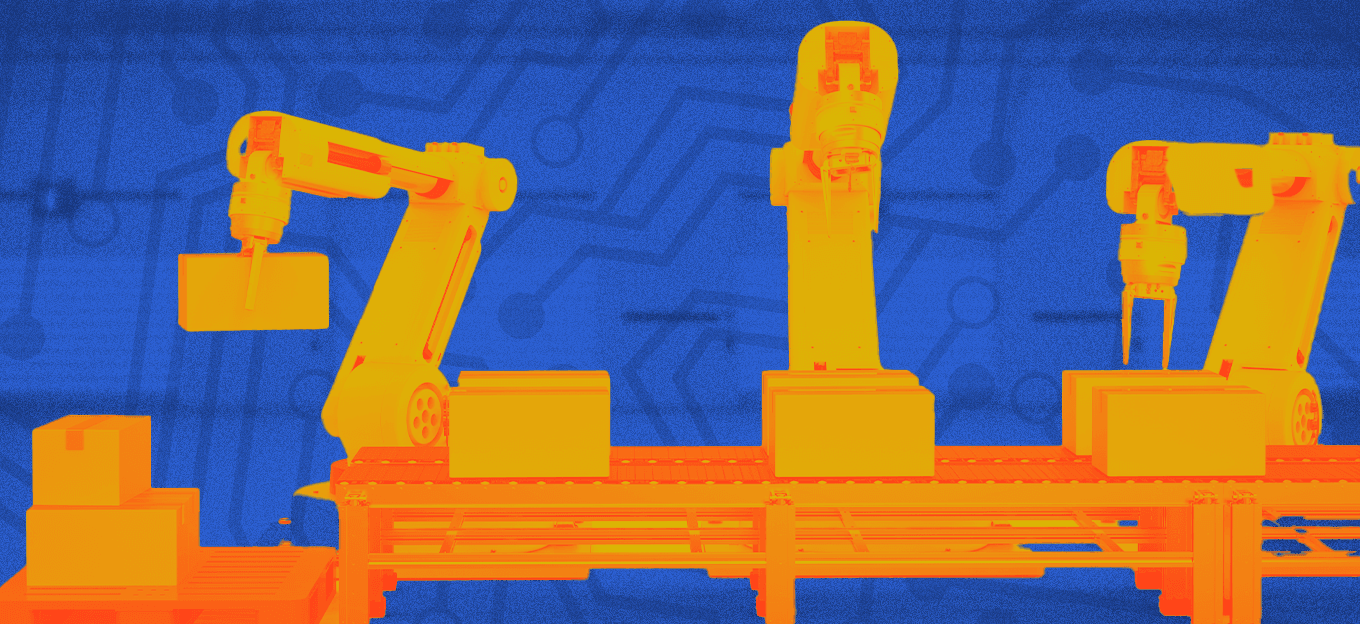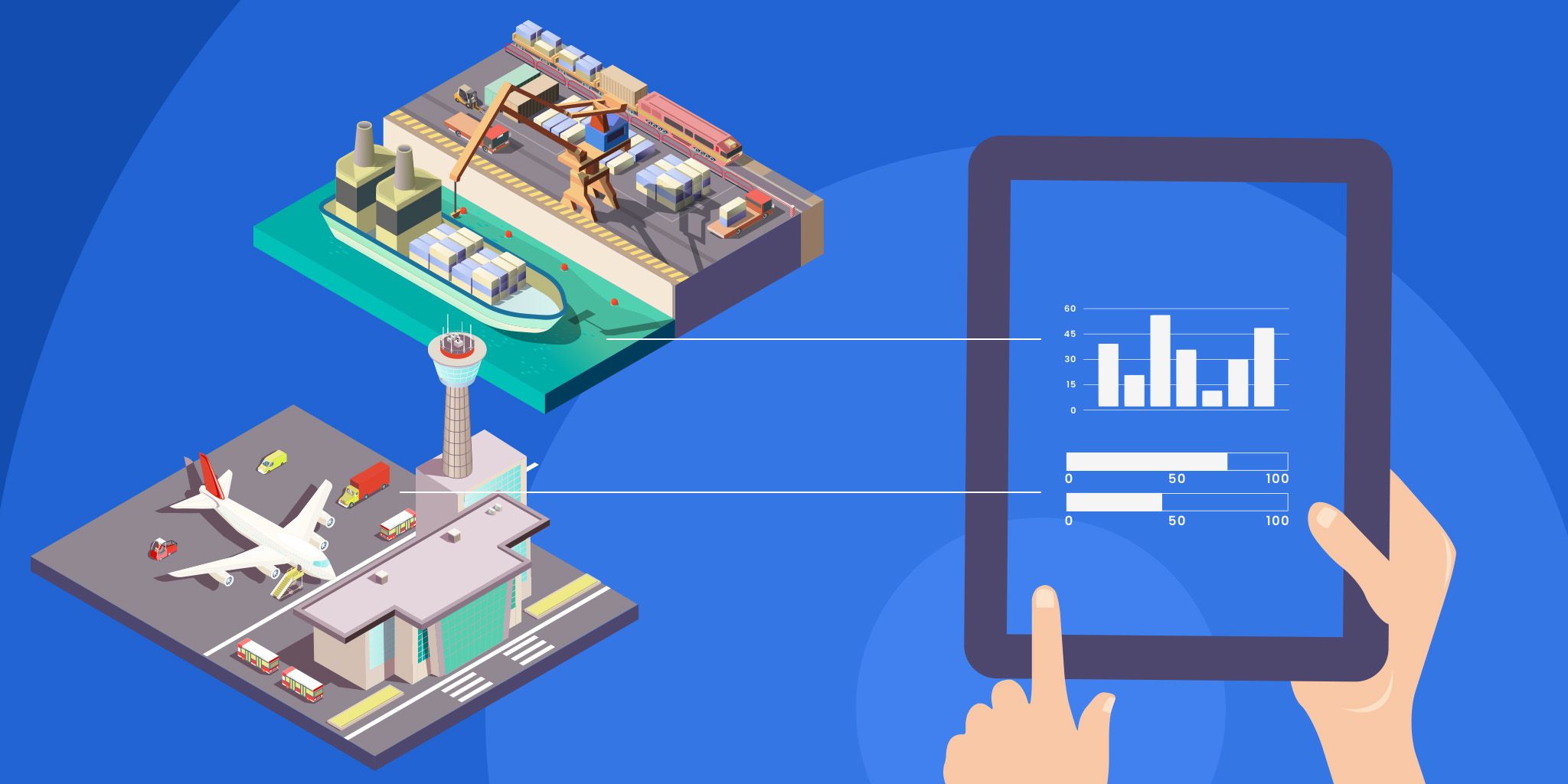10 Helpful Everyday Examples of Artificial Intelligence
10 Helpful Everyday Examples of Artificial Intelligence
- Last Updated: January 17, 2025
IoT For All
- Last Updated: January 17, 2025



Here in 2025, AI is inescapable. Between with competing products from ChatGPT to Google Gemini to Microsoft Copilot, AI has been integrated into daily tech life in a while bunch of visible ways.
But AI has been behind the scenes of your everyday life for a while. Even if you're trying to avoid it, you probably interacted artificial intelligence at least once within the last 5 minutes. Here are 10 of the most common examples of artificial intelligence.
What is Artificial Intelligence?
Before we can identify how applications of artificial intelligence in our lives, it's helpful to know exactly what it is (and what it is not). The Oxford Dictionary defines artificial intelligence as:
"The theory and development of computer systems able to perform tasks that normally require human intelligence, such as visual perception, speech recognition, decision-making, and translation between languages."
Essentially, artificial intelligence is the method by which a computer is able to act on data through statistical analysis, enabling it to understand, analyze, and learn from data through specifically designed algorithms. This is an automated process. Artificially intelligent machines can remember behavior patterns and adapt their responses to conform to those behaviors or encourage changes to them. This is a brief definition and there is certainly a lot more that could be said about what AI is.
The most important technologies that make up AI are machine learning (ML), deep learning, and natural language processing (NLP).
Machine Learning is the process by which machines learn how better to respond based on structured big data sets and ongoing feedback from humans and algorithms.
Deep Learning is often thought to be a more advanced kind of ML because it learns through representation, but the data does not need to be structured.
Natural Language Processing (NLP) is a linguistic tool in computer science. It enables machines to read and interpret human language. NLP allows computers to translate human language into computer inputs.
10 Examples of Artificial Intelligence
Here is a list of ten examples of artificial intelligence that you're likely to come across daily.
1. Maps and Navigation
AI has drastically improved traveling. Instead of having to rely on printed maps or directions, you can now use Google or Apple Maps on your phone and type in your destination.
So how does the application know where to go? And what's more, the optimal route, road barriers, and traffic congestions? Not too long ago, only satellite-based GPS was available, but now, artificial intelligence is being incorporated in navigation applications to give users a much more enhanced experience.
Using machine learning, the algorithms remember the edges of the buildings that it has learned, which allows for better visuals on the map, and recognition and understanding of house and building numbers. The application has also been taught to understand and identify changes in traffic flow so that it can recommend a route that avoids roadblocks and congestion.
2. Facial Detection and Recognition
Using virtual filters on our faces when taking pictures and using face ID for unlocking our phones are two examples of artificial intelligence that are now part of our daily lives. The former incorporates face detection, meaning any human face is identified. The latter uses face recognition through which a specific face is recognized. Facial recognition is also used for surveillance and security by government facilities and airports.
3. Text Editors or Autocorrect
You may have used tools such as Grammarly as a student to check your final paper before submitting it to your teacher or may use it even now to check spelling in an email to your boss. This is another example of artificial intelligence. AI algorithms use machine learning, deep learning, and natural language processing to identify incorrect usage of language and suggest corrections in word processors, texting apps, and every other written medium, it seems.
Linguists and computer scientists work together to teach machines grammar, just like you were taught at school. The algorithms are taught through high-quality language data so when you use a comma incorrectly, the editor will catch it.
4. Search and Recommendation Algorithms
When you want to watch a movie or shop online, have you noticed that the items suggested to you are often aligned with your interests or recent searches? These smart recommendation systems have learned your behavior and interests over time by following your online activity. The data is collected at the front end (from the user) and stored and analyzed through machine learning and deep learning. It is then able to predict your preferences, usually, and offer recommendations for things you might want to buy or listen to next.
5. Chatbots
As a customer, interacting with customer service can be time-consuming and stressful. For companies, it's an inefficient department that is typically expensive and hard to manage. One increasingly popular artificially intelligent solution to this is the use of AI chatbots. The programmed algorithms enable machines to answer frequently asked questions, take and track orders, and direct calls.
Chatbots are taught to impersonate the conversational styles of customer representatives through natural language processing (NLP). Advanced chatbots no longer require specific formats of inputs (e.g. yes/no questions). They can answer complex questions requiring detailed responses. In fact, if you give a bad rating for the response you get, the bot will identify the mistake it made and correct it for the next time, ensuring maximum customer satisfaction.
6. Digital Assistants
When we have our hands full, we often resort to ordering digital assistants to perform tasks on our behalf. When you are driving, you might ask the assistant to call your mom (don't text and drive, kids). A virtual assistant like Siri is an example of an AI that will access your contacts, identify the word “Mom,” and call the number. These assistants use NLP, ML, statistical analysis, and algorithmic execution to decide what you are asking for and try to get it for you. Voice and image search work in much the same way.
7. Social Media
Social media applications are using the support of AI to monitor content, suggest connections, and serve advertisements to targeted users, among many other tasks to ensure that you stay invested and "plugged in."
AI algorithms can spot and swiftly take down problematic posts that violate terms and conditions through keyword identification and visual image recognition. The neural network architecture of deep learning is an important component of this process, but it doesn't stop there.
Social media companies know that their users are their product, so they use AI to connect those users to the advertisers and marketers that have identified their profiles as key targets. Social media AI also has the ability to understand the sort of content a user resonates with and suggests similar content to them.
8. E-Payments
Having to run to the bank for every transaction is an enormous waste of time and AI is playing a part in why you haven't been to a bank branch in 5 years. Banks are now leveraging artificial intelligence to facilitate customers by simplifying payment processes.
Intelligent algorithms have made it possible to make deposits, transfer money, and even open accounts from anywhere, leveraging AI for security, identity management, and privacy controls.
Even potential fraud can be detected by observing users' credit card spending patterns. This is also an example of artificial intelligence. The algorithms know what kind of products a user buys, when and from where they are typically bought, and in what price bracket they fall.
When there is an unusual activity that does not fit in with the user profile, the system can generate an alert or a prompt to verify transactions.
9. Weather Forecasting
While it has yet to take over entirely, AI has begun to make its mark in weather prediction, offering meteorologists a tool that can work much faster than traditional methods, using a novel approach.
Traditional meteorology relies on a mix of approaches to arrive at a coherent, and reasonably correct, prediction. Meteorologists consult complex weather models, designed to painstakingly anticipate the actual physics of the atmosphere based on data from the field collected from local weather stations, weather balloons, and even storm-chasing aircraft. Then, meteorologists themselves consider the predictions of multiple models, adding in their own professional expertise to arrive at a prediction.
New AI tools, like the GraphCast model produced by Google’s DeepMind, can make real-time predictions based on historical data. They can effortlessly parse through decades of observed weather data to arrive at reasonable future predictions much faster than humans ever could. Google’s “Nowcast” uses AI modeling to deliver its up-to-the-second predictions for local conditions. Any other service that provides comparably short-notice, location-centric predicts probably has AI under the hood as well.
10. Music Mastering
The final step of music production, music mastering, is a complex and nuanced process to control the volume and frequency characteristics of a song or album, in order to ensure that it sounds acceptable in a wide variety of conditions and on various devices. Historically, this process was performed manually by audio engineers with highly-trained ears and specialized software.
Now, online music companies that provide services like distribution, audio plugins, and sample licensing have been adding AI-mastering to their suite of available options. In a world where independent labels and artists are an increasingly large share of the music scene, the odds are very good that you’ve been listing to AI-mastered tracks without even knowing it.
Be on the Lookout for More Applications of AI In Your Daily Life
These examples of artificial intelligence show why AI is talked about everywhere; it's used everywhere. Nearly every part of our day is touched by AI. You might get a new coffee suggestion when you go to mobile order. Instagram might show a new video while you're on your lunch break. Google Maps gets you to dinner at a new restaurant. The list could go on forever, but these 8 examples of AI show what it is and how we use it.
This article was originally published on May 5, 2020 and was updated on January 17, 2025.
The Most Comprehensive IoT Newsletter for Enterprises
Showcasing the highest-quality content, resources, news, and insights from the world of the Internet of Things. Subscribe to remain informed and up-to-date.
New Podcast Episode

How Drones and Telecom Enable Aerial IoT
Related Articles





